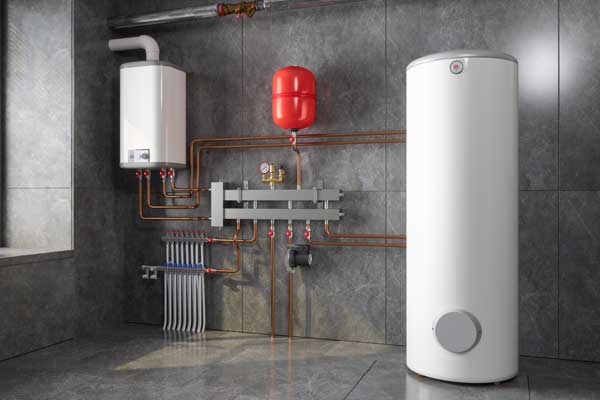Straightforward Methods to Maintain Your Home's Hot Water System Properly
Straightforward Methods to Maintain Your Home's Hot Water System Properly
Blog Article
How do you really feel with regards to Tips For Maintaining Your Hot Water Heater?

Warm water is crucial for day-to-day convenience, whether it's for a rejuvenating shower or washing meals. To ensure your hot water system runs efficiently and lasts longer, normal upkeep is vital. This write-up offers useful suggestions and insights on how to keep your home's warm water system to prevent interruptions and expensive repairs.
Intro
Keeping your home's hot water system might seem daunting, yet with a couple of basic actions, you can guarantee it runs efficiently for many years to come. This overview covers every little thing from recognizing your warm water system to do it yourself upkeep ideas and recognizing when to contact expert assistance.
Significance of Keeping Your Warm Water System
Normal upkeep not just prolongs the life expectancy of your hot water system but also ensures it runs successfully. Disregarding upkeep can result in reduced efficiency, higher power costs, and even premature failing of the system.
Signs Your Warm Water System Requirements Maintenance
Recognizing when your hot water system requires interest can prevent major concerns. Watch out for signs such as irregular water temperature, weird noises from the heating system, or rustic water.
Flushing the Hot Water Heater
Flushing your hot water heater removes debris buildup, boosting efficiency and lengthening its life.
Monitoring and Replacing Anode Rods
Anode rods protect against corrosion inside the storage tank. Checking and changing them when worn out is important.
Facility Issues Needing Expert Aid
Instances include major leakages, electric troubles, or if your water heater is regularly underperforming.
Regular Specialist Upkeep Benefits
Expert maintenance can consist of detailed examinations, tune-ups, and ensuring compliance with safety requirements.
Checking and Readjusting Temperature Level Setups
Readjusting the temperature settings ensures optimal performance and security.
DIY Tips for Upkeep
You can do numerous upkeep jobs on your own to maintain your warm water system in leading problem.
Looking for Leakages
Consistently evaluate pipelines and links for leakages, as these can bring about water damages and greater expenses.
Comprehending Your Warm Water System
Before diving into maintenance tasks, it's useful to understand the basic parts of your warm water system. Commonly, this consists of the hot water heater itself, pipelines, anode rods, and temperature controls.
Monthly Maintenance Tasks
Regular month-to-month checks can aid capture small problems before they escalate.
Testing Pressure Alleviation Valves
Checking the stress relief valve ensures it functions appropriately and protects against extreme pressure buildup.
Insulating Pipelines
Protecting hot water pipes reduces warmth loss and can conserve energy.
When to Call a Professional
While do it yourself upkeep is useful, some issues call for expert competence.
Conclusion
Normal upkeep of your home's hot water system is crucial for performance, durability, and cost financial savings. By complying with these tips and recognizing when to seek specialist help, you can make sure a dependable supply of warm water without unanticipated disruptions.
How to Maintain an Instant Hot Water Heater
Before tinkering with your hot water heater, make sure that it’s not powered on. You also have to turn off the main circuit breaker and shut off the main gas line to prevent accidents. Also turn off the water valves connected to your unit to prevent water from flowing into and out of the appliance. 2. When you’re done, you have to detach the purge valves’ caps. These look like the letter “T†and are situated on either side of the water valves. Doing so will release any pressure that has accumulated inside the valves while at the same time avoid hot water from shooting out and burning your skin. 3. When the purge valves’ caps are removed, you have to connect your hosing lines to the valves. Your unit should have come with three hoses but if it didn’t, you can purchase these things from any hardware or home repair shops. You can also get them from retail stores that sell water heating systems. Read the user’s manual and follow it to complete this task properly. When the hosing lines are connected, open the purge port’s valves. 4. You should never use harsh chemical cleaners or solutions when cleaning your unit. Make use of white vinegar instead. It should be undiluted and you’ll probably use about 2 gallons. 5. Now flush your water heater. This task should probably take about 40 minutes. We can’t give you specific directions for this because the procedure is carried out depending on the type, model and brand of your heater. With that being said, refer to the user’s manual. 6. When you’re done draining the unit, you have to turn off the purge port valves again. Remove the hosing lines that you earlier installed on each of the water valves. Put the valve caps (purge port) back in their respective places and be very careful so as not to damage the rubber discs that are found inside these caps. 7. Now that everything’s back in place, check your user’s manual again to find out how to reactivate your water heating system. 8. Once it is working, turn one of your hot water faucets on just to let air pass through the heater’s water supply pipes. Leave the tap on until water flows smoothly out of it. https://www.orrplumbing.com/blog/2014/september/how-to-maintain-an-instant-hot-water-heater/

I came across that write up on Tips For Maintaining Your Hot Water Heater while doing a lookup on the search engines. Sharing is nice. You just don't know, you may be helping someone out. Thanks a lot for being here. Return soon.
Click Here Report this page